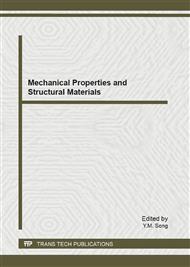p.445
p.449
p.455
p.461
p.465
p.469
p.473
p.477
p.481
Influence of Carbon Content on Corrosion Resistance Performance of Weathering Steel
Abstract:
The corrosion resistance performance of different carbon content weathering steels were investigated by cycle immersion corrosion test, rust layer micro-analysis and electrochemical impedance spectra techniques. The results show that the corrosion resistance performance is enhanced with decreasing carbon content of weathering steel. And the corrosion potential of rust layer becomes more positive, corrosion current density decreases, the anode dissolution of rust layer is impeded and the rust layer have more protect performance for test steel with decreasing carbon content of weathering steel.
Info:
Periodical:
Pages:
465-468
Citation:
Online since:
October 2012
Authors:
Price:
Сopyright:
© 2012 Trans Tech Publications Ltd. All Rights Reserved
Share:
Citation:


